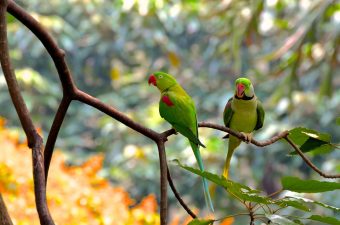Hong Kong is a small autonomous territory with fewer than 7.5 million residents. Yet this bustling urban center in southeastern China is at the very center of the global wildlife trafficking trade, according to local experts.

“Hong Kong’s illegal wildlife trade is contributing to a global extinction crisis,” The University of Hong Kong explains. “Every year millions of live animals, plants and their derivatives are illegally trafficked into and through Hong Kong, by transnational companies and organised crime syndicates.”
Over the last decade, the university notes, “the diversity of endangered species imported into Hong Kong has increased by 57%. At the same time, the estimated value of the trade has increased by 1,600%. Since 2013, seizures of illegal ivory, pangolin scales and rhino horn have been made by Hong Kong authorities, potentially equating to the deaths of 3,000 elephants, 96,000 pangolins and 51 rhinoceros.”
In a new 200-page report “Trading in Extinction: The Dark Side of Hong Kong’s Wildlife Trade,” the Hong Kong Wildlife Trade Working Group, a consortium of nonprofits, details the vast numbers of critically endangered species and their parts that have been seized by local law enforcement officials over the past five years.
Thanks to its ever-busy seaports and airports as well as geographic location, Hong Kong is a vital gateway to China, linking the country with the world’s largest black market in the parts of critically endangered animals like pangolin scales and rhino horns to Southeast Asian wildlife trafficking hubs such as the Philippines, Vietnam and Malaysia. These latter countries in turn serve as gateways into Asia from illegally trafficked animals parts from Africa and elsewhere.
“Our research indicates Hong Kong has become a hub for organised wildlife smugglers, with consequences for the international reputation of our city as well as international biodiversity,” a prominent wildlife expert notes. “Extinction of elephants, rhino, pangolin and many other species in our lifetime is on the horizon, unless the illegal trade is stopped.”
In pangolin seizures alone Hong Kong accounted for more than any other country. Between 2013 and 2017, the small Chinese territory seized 43 metric tons of pangolin scales and other body parts in shipments arriving from countries such as Nigeria and Cameroon. Within just two years, between 2013 and 2015, the amounts of pangolin scales and parts intercepted in Hong Kong equaled 45% of all pangolin products seized worldwide between 2007 and 2015.
Yet despite the appalling extent of wildlife crimes, which are worth an estimated $23 billion annually worldwide, local authorities in Hong Kong tend not to take the issue seriously enough, stresses Amanda Whitfort, an associate professor of law at the University of Hong Kong who one of the authors of the report. “Wildlife crime in Hong Kong remains under-policed and under-investigated. Wildlife smuggling is not regarded as organised and serious crime, under Hong Kong law,” Whitfort says. “Failure to include wildlife smuggling as a crime … hampers authorities’ powers to effectively prosecute those behind the networks and syndicates that take advantage of Hong Kong’s position as a major trading port.”
The New York Times concurs. “The official reluctance to crack down on the illegal wildlife trade is explained in part by the territory’s long history as perhaps the world’s premier entrepôt for legal wildlife products,” the newspaper notes. The city is culturally and physically adjacent to Guangdong province, a center of traditional Chinese medicine and ivory craftsmanship for centuries, where the consumption of wildlife for food is also deeply ingrained.”
The Chinese territory is “also close to Fujian province, a coastal region famous for its carving industry, where many illegal wildlife products — rhinoceros horn, helmeted hornbill crests, rosewood — are turned into high-end jewelry, knickknacks and statuary for the Chinese market,” the paper adds.
Source: Sustainability Times



